 W
WAgnes of Antioch was a Queen of Hungary from 1172 until 1184 as the first wife of Béla III.
 W
WAgnes of Austria, a member of the House of Babenberg, was Queen of Hungary from 1168 until 1172 by her first marriage with King Stephen III of Hungary and Duchess of Carinthia by her second marriage with Duke Herman of Carinthia from 1173 until 1181.
 W
WÁlmos was a Hungarian prince, the son of King Géza I of Hungary and brother of King Coloman. He held several governmental posts in the Kingdom of Hungary.
 W
WAndrew II, also known as Andrew of Jerusalem, was King of Hungary and Croatia between 1205 and 1235. He ruled the Principality of Halych from 1188 until 1189/1190, and again between 1208/1209 and 1210. He was the younger son of Béla III of Hungary, who entrusted him with the administration of the newly conquered Principality of Halych in 1188. Andrew's rule was unpopular, and the boyars expelled him. Béla III willed property and money to Andrew, obliging him to lead a crusade to the Holy Land. Instead, Andrew forced his elder brother, King Emeric of Hungary, to cede Croatia and Dalmatia as an appanage to him in 1197. The following year, Andrew occupied Hum.
 W
WAnonymus Bele regis notarius or Master P. was the notary and chronicler of a Hungarian king, probably Béla III. Little is known about him, but his latinized name began with P, as he referred to himself as "P. dictus magister".
 W
WBéla the Blind was King of Hungary and Croatia from 1131. He was blinded along with his rebellious father Álmos on the order of Álmos's brother, King Coloman of Hungary. Béla grew up in monasteries during the reign of Coloman's son Stephen II. The childless king arranged Béla's marriage with Helena of Rascia, who would become her husband's co-ruler throughout his reign.
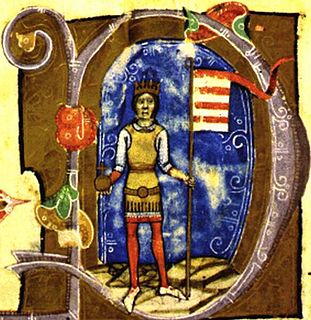 W
WBéla III was King of Hungary and Croatia between 1172 and 1196. He was the second son of King Géza II and Géza's wife, Euphrosyne of Kiev. Around 1161, Géza granted Béla a duchy, which included Croatia, central Dalmatia and possibly Sirmium. In accordance with a peace treaty between his elder brother, Stephen III, who succeeded their father in 1162, and the Byzantine Emperor Manuel I Komnenos, Béla moved to Constantinople in 1163. He was renamed to Alexios, and the emperor granted him the newly created senior court title of despotes. He was betrothed to the Emperor's daughter, Maria. Béla's patrimony caused armed conflicts between the Byzantine Empire and the Kingdom of Hungary between 1164 and 1167, because Stephen III attempted to hinder the Byzantines from taking control of Croatia, Dalmatia and Sirmium. Béla-Alexios, who was designated as Emperor Manuel's heir in 1165, took part in three Byzantine campaigns against Hungary. His betrothal to the emperor's daughter was dissolved after her brother, Alexios, was born in 1169. The emperor deprived Béla of his high title, granting him the inferior rank of kaisar.
 W
WColoman the Learned, also the Book-Lover or the Bookish was King of Hungary from 1095 and King of Croatia from 1097 until his death. Because Coloman and his younger brother Álmos were underage when their father Géza I died, their uncle Ladislaus I ascended the throne in 1077. Ladislaus prepared Coloman—who was "half-blind and humpbacked", according to late medieval Hungarian chronicles—for a church career, and Coloman was eventually appointed bishop of Eger or Várad in the early 1090s. The dying King Ladislaus preferred Álmos to Coloman when nominating his heir in early 1095. Coloman fled from Hungary but returned around 19 July 1095 when his uncle died. He was crowned in early 1096; the circumstances of his accession to the throne are unknown. He granted the Hungarian Duchy—one-third of the Kingdom of Hungary—to Álmos.
 W
WConstance of Hungary was the second Queen consort of Ottokar I of Bohemia.
 W
WElizabeth of Hungary, was a Hungarian princess member of the House of Árpád and by marriage Duchess of Greater Poland.
 W
WEmeric, also known as Henry or Imre, was King of Hungary and Croatia between 1196 and 1204. In 1184, his father, Béla III of Hungary, ordered that he be crowned king, and appointed him as ruler of Croatia and Dalmatia around 1195. Emeric ascended the throne after the death of his father. During the first four years of his reign, he fought his rebellious brother, Andrew, who forced Emeric to make him ruler of Croatia and Dalmatia as appanage.
 W
WGertrude of Merania was Queen of Hungary as the first wife of Andrew II from 1205 until her assassination. She was regent during her husband's absence.
 W
WGéza II was King of Hungary and Croatia from 1141 to 1162. He was the oldest son of Béla the Blind and his wife, Helena of Serbia. When his father died, Géza was still a child and he started ruling under the guardianship of his mother and her brother, Beloš. A pretender to the throne, Boris Kalamanos, who had already claimed Hungary during Béla the Blind's reign, temporarily captured Pressburg with the assistance of German mercenaries in early 1146. In retaliation, Géza, who came of age in the same year, invaded Austria and routed Henry Jasomirgott, Margrave of Austria, in the Battle of the Fischa.
 W
WBuzád II Hahót, O.P., was a Hungarian nobleman, the first known Ban of Severin. He later gave up his position in society and entered the Dominican Order.
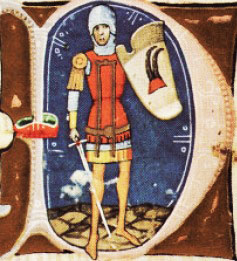 W
WHahold (I) from the kindred Hahót, also known as Hahold the Great, was a German mercenary knight possibly from Thuringia who settled down in the Kingdom of Hungary. Promoting to the Hungarian nobility, he became the first member of the gens Hahót, thus he was also the forefather of the late medieval powerful Bánfi de Alsólendva family.
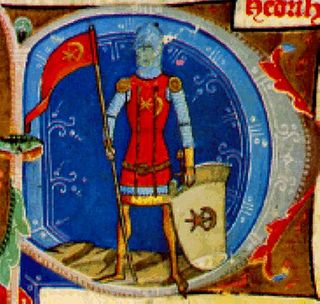 W
WHéder, also Hedrich, Heindrich and Henry was a German knight possibly from the Duchy of Swabia, who, alongside his brother Wolfer, settled down in the Kingdom of Hungary and became a member of the Hungarian nobility. Héder was also eponymous co-founder of the powerful Héder clan and ancestor of the Hédervári family.
 W
WHelena (Ilona) of Hungary, a member of the royal Árpád dynasty, was Duchess of Austria from 1177 and Styria from 1192 to 1194 by her marriage with the Babenberg duke Leopold V of Austria.
 W
WHelena of Serbia was Queen of Hungary as the wife of King Béla II. After her husband's death, she governed Hungary as regent from 1141 to September 1146 together with her brother, Beloš, during the minority of her eldest son, Géza II, came of age.
 W
WSaint Irene of Hungary, born Piroska, was a Byzantine empress by marriage to John II Komnenos. She is venerated as a saint.
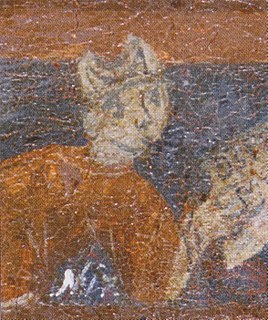 W
WJob was a Hungarian prelate at the turn of the 12th and 13th centuries, who served as Bishop of Vác from 1181 to 1183, and as Archbishop of Esztergom from 1185 until his death.
 W
WJohn was a prelate in the Kingdom of Hungary in the 12th and 13th centuries. He was Bishop of Csanád between 1198 and 1201, Archbishop of Kalocsa from 1202 to 1205 and Archbishop of Esztergom between 1205 and 1223. He crowned Ladislaus III of Hungary, Andrew II of Hungary and Coloman of Halych king. Andrew II appointed him to govern the kingdom during his crusade between 1217 and 1218.
 W
WLadislaus II or Ladislas II was King of Hungary and Croatia between 1162 and 1163, having usurped the crown from his nephew, Stephen III.
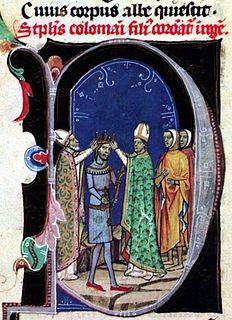 W
WLawrence was a Hungarian prelate at the turn of the 11th and 12th centuries, who served as Archbishop of Esztergom from around 1105 until his death. He was a faithful confidant of Coloman, King of Hungary and the initiator of large-scale church organizational and canon law reforms in the Kingdom of Hungary.
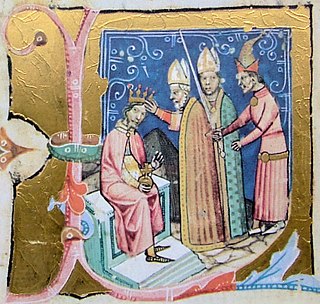 W
WLucas, also known as Luke, was a Hungarian prelate and diplomat in the 12th century. He was Bishop of Eger between 1156 and 1158, and Archbishop of Esztergom from 1158 until his death in 1181.
 W
WMargaret of France was queen of England by marriage to Henry the Young King, and queen of Hungary and Croatia by marriage to Béla III of Hungary.
 W
WMary of Hungary, of the Árpád dynasty, was Queen consort of the Kingdom of Naples. She was a daughter of Stephen V of Hungary and his wife Elizabeth the Cuman. Mary served as Regent in Provence in 1290–1294 and in Naples in 1295–96, 1296–98, and 1302, during the absences of her consort.
 W
WMikó was a Hungarian prelate in the twelfth century. He was Archbishop of Kalocsa between around 1156 and 1165. He crowned two Hungarian monarchs, Ladislaus II and Stephen IV king, because Lucas, Archbishop of Esztergom, who considered them as usurpers, had denied to perform the ceremony.
 W
WNicholas was a 12th-century prelate in the Kingdom of Hungary. He was Archbishop of Esztergom between 1181 and 1183, and Bishop of Várad from 1163 to 1181.
 W
WSeraphin was a Hungarian prelate at the turn of the 11th and 12th centuries, who served as Archbishop of Esztergom from around 1095 until his death.
 W
WStephen II, King of Hungary and Croatia, ruled from 1116 until 1131. His father, King Coloman, had him crowned as a child, thus denying the crown to his uncle Álmos. In the first year of his reign, Venice occupied Dalmatia and Stephen never restored his rule in that province. His reign was characterized by frequent wars with neighbouring countries.
 W
WStephen III was King of Hungary and Croatia between 1162 and 1172. He was crowned king in early June 1162, shortly after the death of his father, Géza II. However, his two uncles, Ladislaus and Stephen, who had joined the court of the Byzantine Empire, challenged his right to the crown. Only six weeks after his coronation, the Byzantine Emperor Manuel I Komnenos launched an expedition against Hungary, forcing the Hungarian lords to accept Ladislaus' rule. Stephen sought refuge in Austria, but returned and seized Pressburg. Ladislaus, who died on 14 January 1163, was succeeded by Stephen's younger uncle and namesake, Stephen IV, without resistance, but his rule was unpopular. The young Stephen defeated his uncle on 19 June 1163 and expelled him from Hungary.
 W
WStephen IV was King of Hungary and Croatia, ascending to the throne between 1163 and 1165, when he usurped the crown of his nephew, Stephen III. He was the third son of Béla II of Hungary, and when his conspiracy against his brother Géza II failed, he was exiled from Hungary in the summer of 1157. He first sought refuge in the Holy Roman Empire, but received no support from Emperor Frederick I. Shortly afterwards he moved to the Byzantine Empire, where he married a niece of Emperor Manuel I Komnenos, Maria Komnene, and converted to the Orthodox Church.
 W
WSwanhilde of Ungarnmark was an Austrian royal consort as Margravine of Austria.